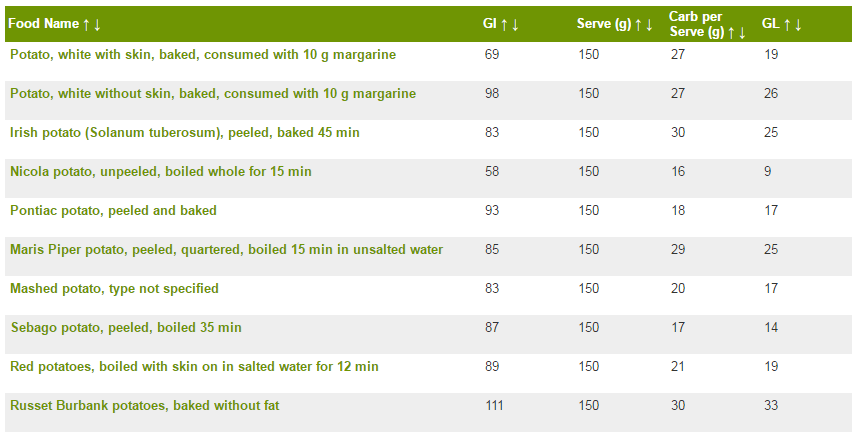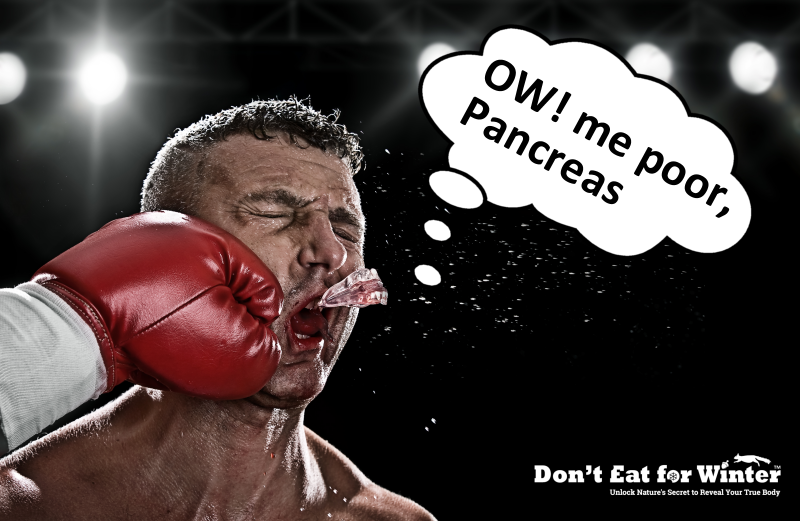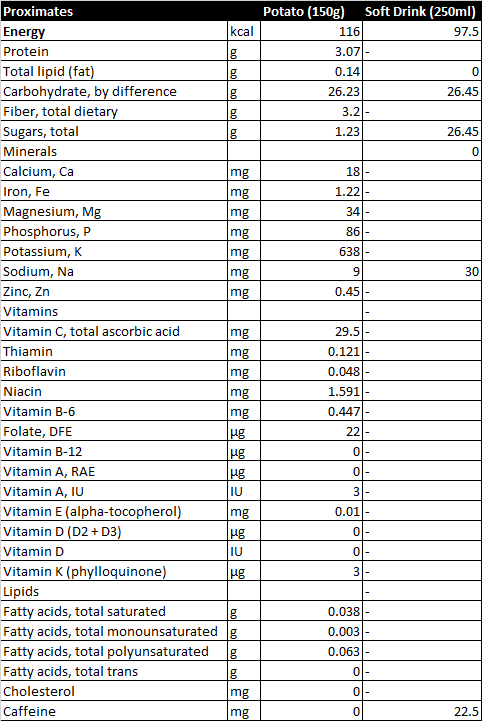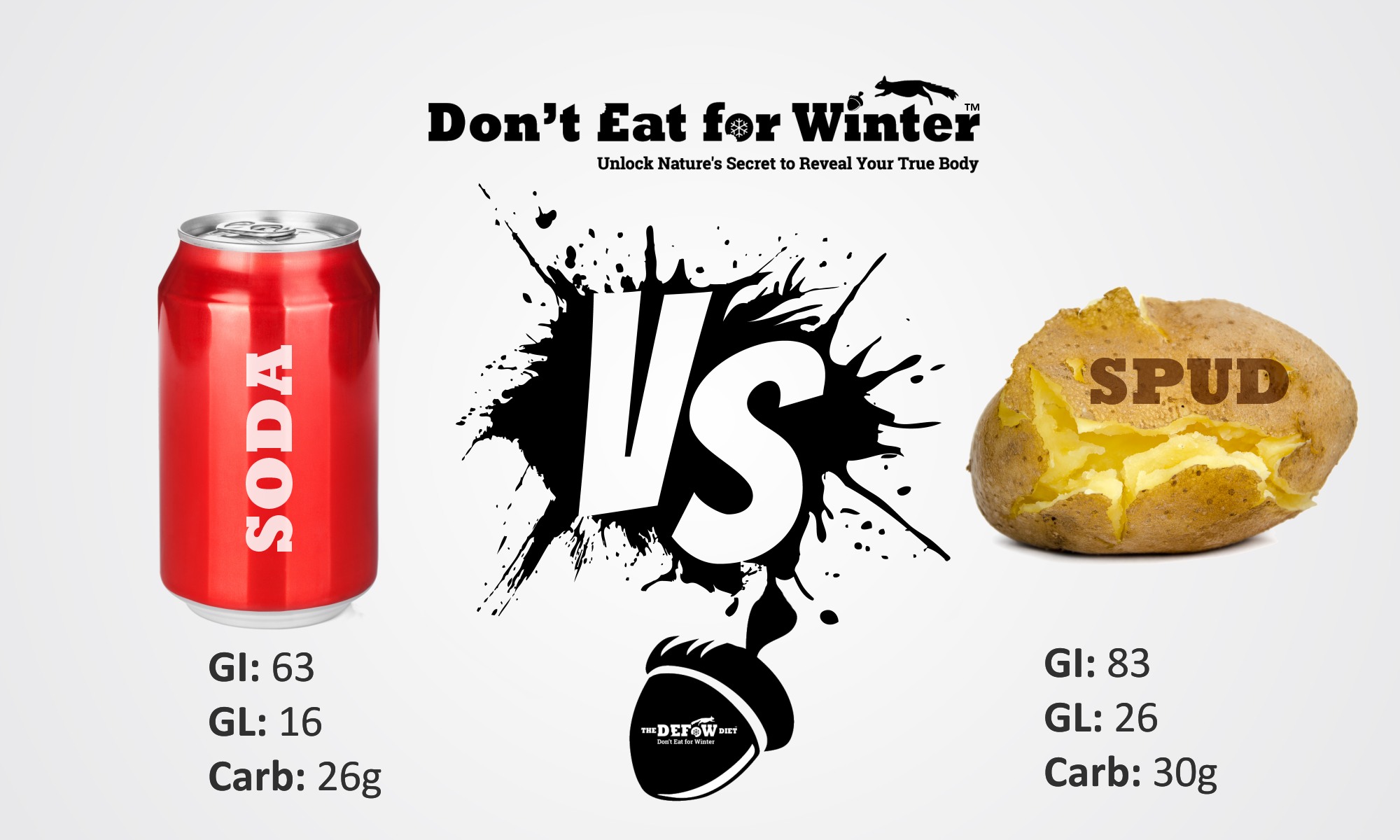Ladies and gentlemen…
Tonight we have a very special battle in store for you. With all this talk about sugar tax… let’s find out who is the champion in terms of blood sugar spiking mania between a popular soft drink loaded with sugar and a good old medium-sized Irish baked spud!!!
In the red corner we have a typical portion of SODA, weighing in at 250mls…
In the blue corner we have a medium sized Irish baked potato, weighing in at 150g…
SODA, the challenger, having come onto the scene mere decades ago, once a weekend novelty, now a daily treat to wash down lunches all over the world.
Potatoes, brought to these parts, in the 16th century by Sir Walter Raleigh, the staple food of Irish, until the great famine in the 19th century, where it suffered from blight, but is still part of the daily food food supply thanks to blight sprays.
Both carbohydrates (what are carbs?), one has gotten a bad rap lately and has been demonised as a main player in the obesity crisis, the other, seen as a friendly nutritious food, served in large portions in various forms in restaurants all over.
But which affects your blood sugars fastest and gives your pancreas a tougher beating?
LETS GET READY TO RUMBLE!!!
In order to find out which food has a higher glycemic index we go to the University of Sydney’s Glycemic Index Website. The glycemic index is a measure of how quickly the food is processed by your tummy, converting those carbs into pure glucose which then swims around your bloodstream forcing your pancreas to release the hormone insulin in order for the energy to be processed and stored. When your cells sense insulin, they open up to receive all that wonderful sugary energy YIPPEE!
It is a scale measured against using glucose as the reference, where 50g serving of glucose gives a GI of 100! BOOM BOOM lights out!
So back to our two contenders…
Fizzy soda pop soft drinks with various well known names are up first… from a search of the GI database, soft drinks gives back the following table:

Amazing stats, let’s take Coca Cola as our reference in this match, it comes in with a GI of 63 for a 250ml serving (a typical small glass), and a glycemic load (or GL) of 16.
Aside: One unit of glycemic load is the same as the effect of consuming one gram of glucose. It is calculated by multiplying the grams of carbs in the food times the food’s GI and then dividing by 100.
In the case of a glass of “the real thing” this is 63*26/100 = 15.75
Next up is a good old fashioned irish baked potato, we all know about the reputation of the Irish as good fighters so let’s see what this old favourite yields from the glycemic index database…

As you can see from this, the stats of the solanum tuberosum are impressive, and not even the king of the spuds! But lets take it as a reference…
The good old staple of the Irish for the past 400+ years has a GI of 83 and a GL of 25!!! That a right jab and left hook combination causing a blood sugar level explosion that beats the fizzy contender by 20 points on the GI Scale.
Perfoming the GL calculation of 83 (gi) x 30g (carbs) / 100 = 24.9, beating Coke by 10!!!
That’s a KO for Coca Cola from the humble Irish Baked Potato!!!
Now imagine 3 of these on your plate, with a few chips, turnips, carrots, maybe some garlic spuds and sher throw in a yorkshire pudding, and followed up by a can of coke to wash it all down… talk about giving your poor old pancreas a daily kick on the cahunas, which over time will lead to it requiring serious medical attention!

The WINNER of this round: The Irish Baked Potato
Of course this is just from a pure sugar spike point of view. It seems hard to believe that a potato can affect blood sugar levels faster than a fizzy soft drink, but it seems the tummy has an incredible ability to break down the sugar starch (polysaccharides) in the potatoes. It can break these down quicker than the syrups and sugars used in soft drinks.
#MINDBLOWN
OK OK OK, I’m giving the potato a bad rap here, they’ll be calling me ‘the potato hating Irish man’ if I don’t redeem myself. There is of course more to it than this, a potato is naturally grown produce, a wonderful gift from mother nature, and so contains other nutrients that a manufactured drink does not.
Let’s have a look at the numbers from the USDA Food Composition Database

As you can see from the table above, the potato is a great source of vitamin C, Calcium, Potassium, many B vitamins and much much more, so from an essential micro-nutrient point of view it is by far the healthier option.
Winner of Round 2: Potato
Potatoes are a rich carbohydrate energy source, and the GI of potatoes can be reduced by eating them with a meal full of fibre and protein e.g. brocolli and beef, even adding butter can lower the GI, but if you’re trying to lose weight, I would hold the fat with such a high GI food, and also make sure not to eat too much of them in one sitting.
Not all carbs are the same so be careful when eating spuds to choose your veg wisely with them, for example turnips or swede have a high GI of 70, although their GL is low enough as the amount of carb in swede per weight is a lot lower than a potato (only 10g per 150g), however something like brocolli has a very very low GI because of the low sugar content and high fibre content and thus will lower the overall GI of the meal, whereas the turnip may not.
Spud Verdict:
Spuds are a food bursting with energy, and should be used wisely. Remember excess sugar in blood will result in the energy being converted to fat, so eat in moderation. Any fat contained in the same meal will also deposit more easily because of the sugar spike and resulting insulin release.
For the active: They are full of good nutrients and a useful tool for people who are very active, especially when accompanied with fibrous veg to give their energy over a longer period of time. For short bursts of high intensity cardio a baked potato could be a good tool to have in a gym bag to load blood sugar not too long before exercise (as they are almost as effective as pure glucose at raising blood sugar levels), and also to quickly replenish glycogen levels in muscles and assist recovery after a tough, heavy workout.
For the office worker/school goer: Your requirement for carbs is modest, so be careful loading the plate up with spuds at lunch time if you’re going back to work and sitting at the desk for the rest of the day.
Soda Verdict:
Soft drinks are loaded with sugar and even though they have a lower GI than spuds offer very little in terms of nutrition. Have them sparingly or as a special treat.
For the Active: They are possibly useful for similar purposes as the spuds in the case of active athletes in order to utilise for energy purposes and re-loading glycogen, and the hit of caffeine in the likes of coca cola make them more of an energy drink over a staple refreshment. However, they offer no meaningful nutrition.
For the office worker/school goer: A can of soda offers the body and brain enough energy for approximately 4 hours without any nutritional value of worth. This should be considered by those sitting at a desk such as office workers and school children and thus avoided where possible. Energy should be consumed through nutritious lower gi foods where possible to supply the body with nutrients for function as well as just energy.
WINNER
THE SPUD!
From a blood sugar spiking point of view, shockingly, the baked Irish spud is the clear winner so should be eaten with caution from that perspective. Eating them alone will cause fast and significant rise in blood sugar levels comparable to eating pure glucose and even more than a glass of soda!
From a nutritional point of view, the Spud is also the obvious winner containing many essential nutrients both minerals and vitamins.
Suggestion: drink water, and avoid soft drinks, with meals containing high gi carbs like spuds and make sure they are combined with very low GI veg where possible to slow down the release of their significant sugar energy. Remember, potatoes are autumnal in nature and trigger processes in the body to promote the storage of fat for Winter. Since they contain so much sugar energy, keep the portions small and load up the dinner plate with veg and meat/fish etc. when you’re having them. This will keep your pancreas happy and healthy long into the future as it won’t have to deal with an intense rush of glucose. Applying this sort of thinking will help you get your body-fat down to prize fighter levels 😉
 Order your copy of Don’t Eat for Winter today to discover the theory of how autumnal foods like spuds, and refined derivatives of autumnal foods such as sugars, syrups and fluffy white starches are not designed to be consumed by the body multiple times a day all year. They are designed to work with our bodies in nature during the autumn so that we store a modest amount of fat to get us through the winter. In todays society we are being prepared for winter every day of every month of every year and so chronic obesity is the result over many years of eating this way. Let’s give obesity the knock out punch and start considering what we eat, when we eat and why we eat.
Order your copy of Don’t Eat for Winter today to discover the theory of how autumnal foods like spuds, and refined derivatives of autumnal foods such as sugars, syrups and fluffy white starches are not designed to be consumed by the body multiple times a day all year. They are designed to work with our bodies in nature during the autumn so that we store a modest amount of fat to get us through the winter. In todays society we are being prepared for winter every day of every month of every year and so chronic obesity is the result over many years of eating this way. Let’s give obesity the knock out punch and start considering what we eat, when we eat and why we eat.
Latest posts by Cian (see all)
- The worst macro combination for fat loss - May 11, 2021
- Top 200 Most Fattening Foods (most autumnal) - March 19, 2020
- Is there such a thing as The Perfect Diet? - November 22, 2019

